Navigating the Tourist Trap
In my worst nightmare it goes something like this:
I’m standing somewhere significant. Maybe historical, or cultural, or just totally fucking majestic. The sort of place your well-traveled friends tell you no but seriously you have to see it.
It’s the sort of moment camera companies have trademarked. Before now the thing I’m looking at was only an understanding of a place in my head, but now it’s becoming an experience; a memory: the image from Wikipedia grows a Z axis and I can touch it and there’s a smell and now I can give you directions to here complete with landmarks and everything.
I inhale deeply through my nose. This is exactly the kind of shit that makes travel worth—
My reverie is shattered by a tiny old woman in a sleeveless floral blouse and a white visor who elbows past me to take a photo of the “Sortie / Exit, Toilettes / Washroom” sign.
A British tour group forces me forward, each of them labeled with a neon Post-It™ note signifying which bus brought them here. A middle-aged woman is digging in her purse in the middle of the path, preventing anyone from going around her, which has infuriated her husband up ahead to the point he’s now standing in the middle of the path with his hands cupped around his mouth screaming get out of the damn path, Emily, no one can get around you as a queue builds on either side of him.
A Japanese kid is switching out absurdly expensive optics on his DSLR and taking macro shots of a fencepost, which doesn’t bother me except that I know his photos of nothing are better than any photo I will take in my lifetime.
Behind me, a meaty shoulder or belly or breast presses into the back of my arm, and in front of me a child who is far too young to have any hope of remembering this family outing is melting the fuck down because he’s the only one of us sane enough to realize that being here, on this path, in this place, is the worst kind of hell.
This gorgeous outdoor space starts to feel small, and the press of tourists is taking all of my oxygen. I suppress the urge to Barry Sanders my way to the nearest exit.
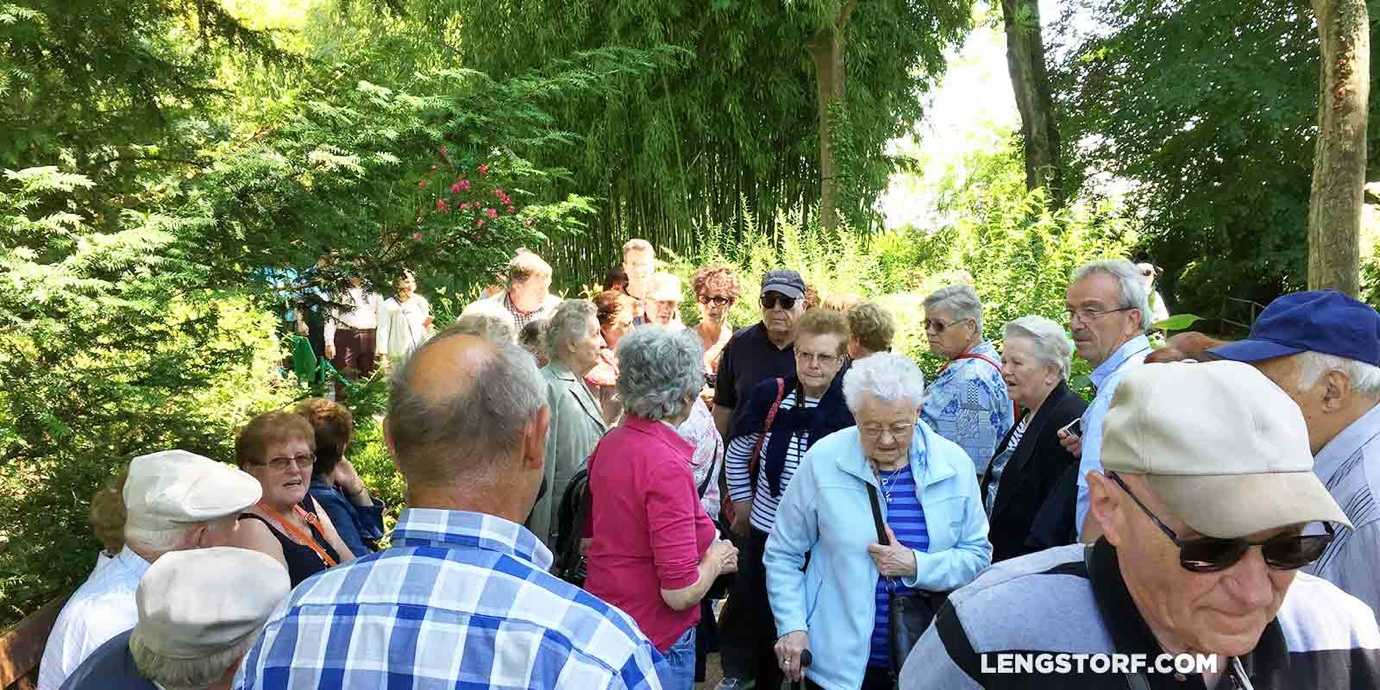
Fear and Self-Loathing in Claude Monet’s Garden
Last Tuesday I lived my nightmare.
In the early afternoon, I climb out the back of a van and into an enormous parking lot1 to join a queue of art- and/or flower-enthused travelers who’ve made the trip to get a glimpse of Monet’s botanical muses.
We enter through a small gate at the southwestern corner of the property. Inside the gate, there’s a ticket booth and high hedges all around — no peeking, I guess. Marisa’s mom bought some package online that lets us skip the line and duck through the hedge.
As weather for standing in a garden goes, this afternoon in Giverny is just about perfect. It’s about 20°C under a bright blue sky with what Bob Ross would certainly describe as “happy little clouds” hovering over the Seine in the western sky.
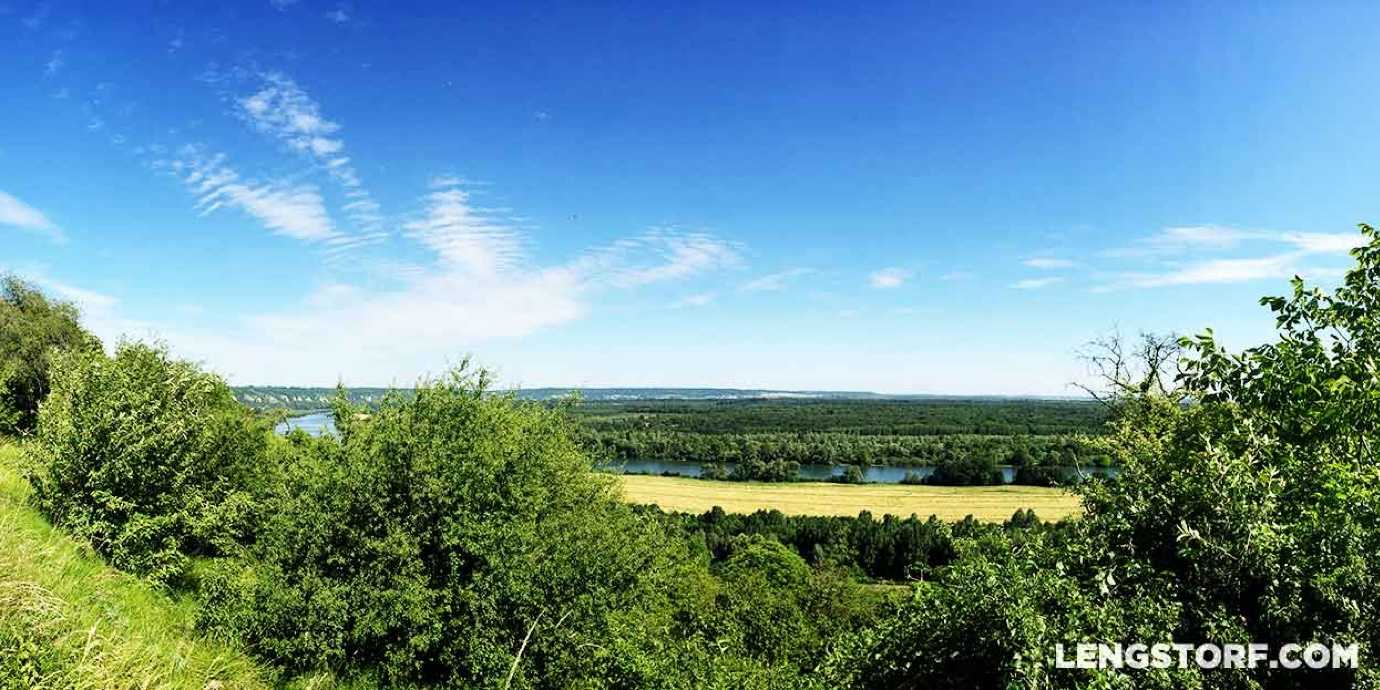
The garden is huge. Maybe a little bigger than a football field2 and crosshatched with paths that lead through intensely colorful landscaping that overflows with flowers I can’t identify3 in colors I didn’t know flowers could be.
Monet’s garden is a special place. And not just because it was the inspiration for a large number of his paintings — this is a place where it just feels good to be for a while.
And the Locusts Descend…
Yet, for all the beauty that the garden has to offer, there will be no peace or reflection here.
By my estimation, roughly 30% of the global population is stuffed inside the walls of Monet’s garden, all jockeying for selfie-space along the garden paths.
Dozens of old women4 from every corner of the globe totter along the path, asking each other how their cameras work and (loudly) discussing the scene:
Aren’t these gorgeous?
What?
The flowers!
The flowers?
Yes!
What about the flowers?
Aren’t they gorgeous?
What’s gorgeous?
And so on.
Teenage girls who’ve slipped away from their parents make doe-eyes and duck-faces for strangers on Instagram.
A young couple detains me and holds up foot traffic so I can take their picture in front of the main path. Four times.
…Sayeth the Locust
I fucking hate tourists, I think to myself as I crouch down in front of a flower that sort of looks like a popcorn ball to take a close-up with a shallow depth of field. Those tend to get more likes, I’ve found.
I smile apologetically at the people waiting behind me as I usher Marisa and Jil into position for a mother-daughter photo. Marisa keeps talking, so I have to try three or four times before she’s not pulling a goofy face in the photo.
When a baby bird I think is a black swan starts jumping from lily pad to lily pad, I take a video and point it out to Jil and we discuss what type of bird it is. The ladies next to us start trying to take a video — what button do I push again? — and point it out to each other and start calling it a baby duck, which I decide is wrong and hold against them as ignorant Americans.5
Marisa and I decide to skip Monet’s house6 and duck outside the walls to buy ice cream. We find a spot in the shade to sit down and I silently judge all the other fatties on tour buses eating ice cream.
The Trouble with Tourist Traps
I cringe at the thought of waiting three hours to ride the London Eye. At Sacre-Cœur, I came as close as I’ve ever been in adult life to starting a physical altercation with some overly-touchy peddler.7
By default, I recoil from anything that would be called an “attraction” when I visit a new city.
The way I see it, these are the places that — once, long ago — had significance, but have now been roped off and sanitized and crammed full of souvenir shops to the point that, really, they’re not anything like what they were when they became significant.8
Anything with any value to a city’s tourism board quickly becomes the Attraction of Theseus: if an historically significant site, incrementally, has all its parts replaced by informational plaques and concession stands, is it still the same historically significant site?

And Yet…
Despite the issues with tourist traps, there’s no denying that some of this stuff really does have historical significance. And really — significance aside — some of it is just really fucking cool to see up close.
The Eiffel Tower is probably one of the top 5 most recognizable structures in the world. Almost everyone can sketch a rough approximation of what it looks like.
But, goddammit, standing on Passerelle Debilly facing SSE at 23:00 is still breathtaking, no matter how many times I’ve seen the photos online before.
So for all the venom and vitriol I spit at tourist attractions, I’m still susceptible to the sense of wonder and awe that made these places attractions in the first place.
Building a Better Mouse Trap
On Tuesday, back in Monet’s garden, I started solving problems in my head.
These paths should be made one-way to avoid this clusterfuck.
Why are half the paths closed?
They should let us pay more for a ticket where only 25 people get to go in at a time.
My claustrophobia and impatience grew in intensity, and my solutions became more extreme.
You should have to pass a basic camera competence exam to get into this place.
Everyone should be allowed three photos before moving further down the path.
By the end I was more or less a Marvel supervillain:
Humanity has failed to make tourism work. To fix tourism, we must kill all tourists.9 This is the only way.
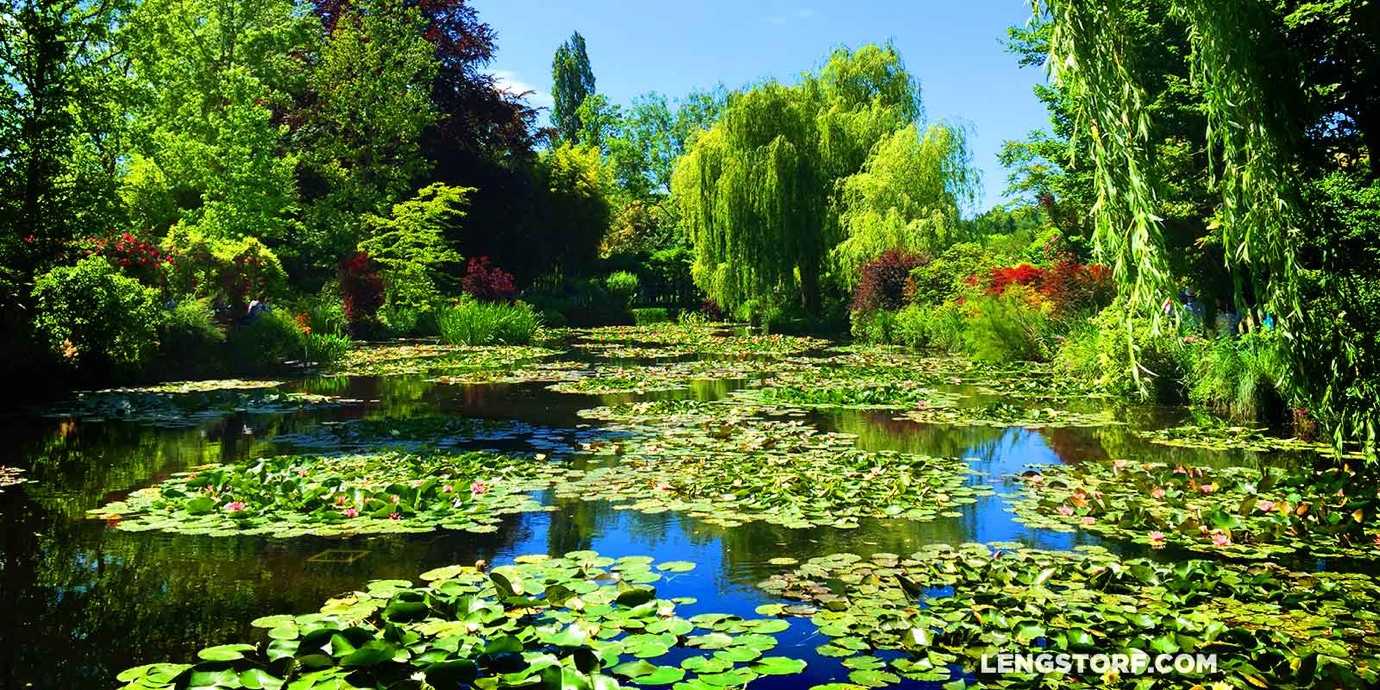
Coming to Terms with Tourism
So I’m here, standing on a bridge over the world’s most famous waterlilies, fuming over the crowds and the chaos and the commercialization of history. I feel cheated because I can’t truly enjoy this experience with all these other jerks pushing their way past me.
The hypocrisy of it all sneaks up on me. I feel a little sick.
I’m one of them.
I came here to look at this place. To take iPhone photos and tell my Facebook friends I’m here.
Honestly, I’m probably less qualified than many of these people: they might be able to name a few Monet paintings — maybe they know more about this painter and his garden than his first name. Really I just came because Jil wanted to go and I wanted to make an effort and keep an open mind.
But really, at the core, I’m only one Tommy Bahama button-down removed from the guy next to me. We’re both foreigners. We both speak no French and have bad American habits and probably offend10 nearly half the locals we meet. We wanted to see the best things the world has to offer, and this particular piece of the globe has been deemed noteworthy — so here we are.
We’re Not So Different, You and I…
My self-consciousness about being an outsider makes me quick to put some distance between myself and tourists. I don’t want French people to look at me and immediately peg me as an American11 and assume I’m just some tourist.
More importantly, I don’t want to be just some tourist.
So, sure, maybe the people in this garden with me will spend their vacations eating burgers because coq au vin sounds too exotic, and maybe they’ll never leave Champs-Élysées unless it’s in the back of a tour van. Maybe they won’t even bother trying to speak French.
None of that makes me better than they are.
When I sit next to an American couple and pretend not to speak English so I don’t have to talk to them, that’s not making me more worldly; it’s further isolating me.
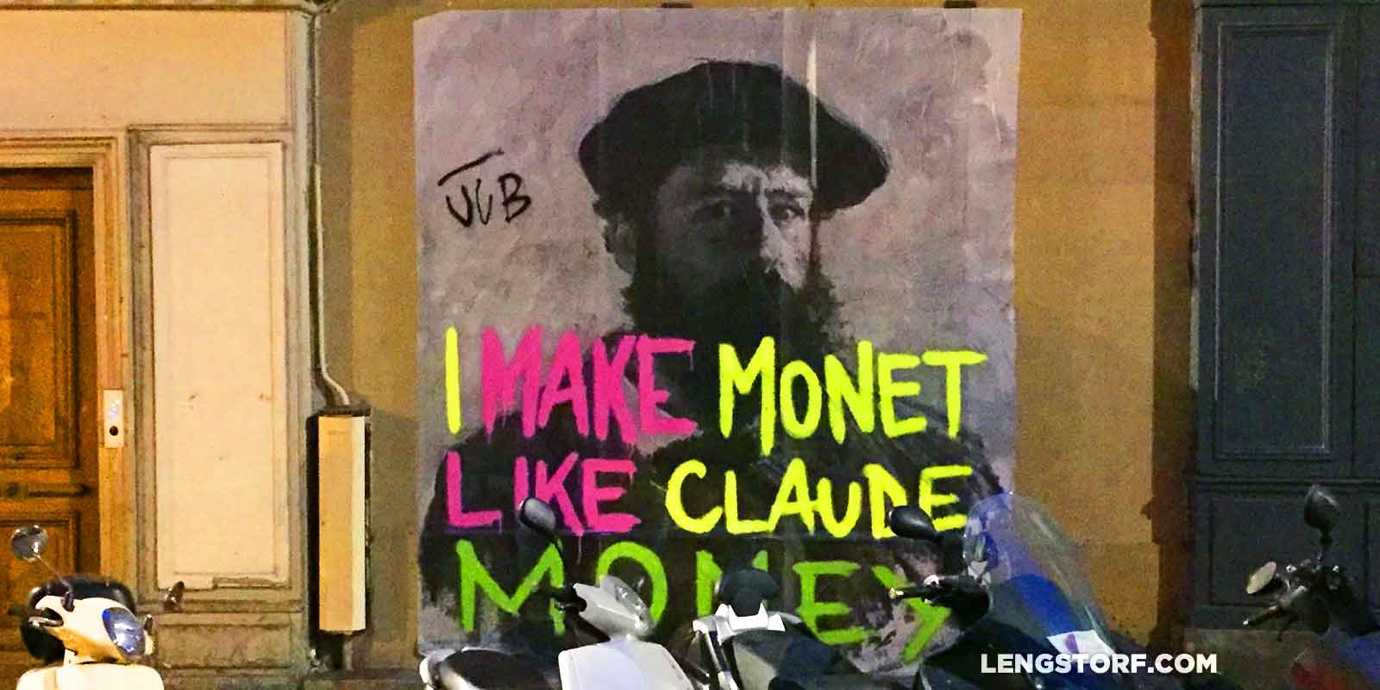
In Search of Authenticity
I want to “live like a local” — it’s been this location independence experiment’s raison d’être12 from the start — but my eagerness to have an “authentic” experience built a wall between me and other travelers.
I want to be seen as The Right Kind of Traveler™: when I meet someone from another country, I want to become the example they offer up as an exception to the rule during a discussion of how awful American tourists are.
But if I let my desire to live as locally as someone can for a month become a default avoidance of anything that could be called “tourist activities”, I’ll miss out on a huge percentage of the world’s beauty and history.
Just because it’s popular doesn’t mean it’s not worth doing.
Authentic Tourism
Outside Monet’s garden, Jil asks me, “Did you have a good time?”
Our ride home is pulling into the parking lot, near the bench where we were all told to meet at 14:30. We hurry to polish off our ice cream cones and buy a bottled water for the drive. The older couple we rode up with looks exhausted — “…can’t wait to get to Provence so we can finally slow down and relax,” the man is saying to his wife, who is flipping through the photos she’s taken today.
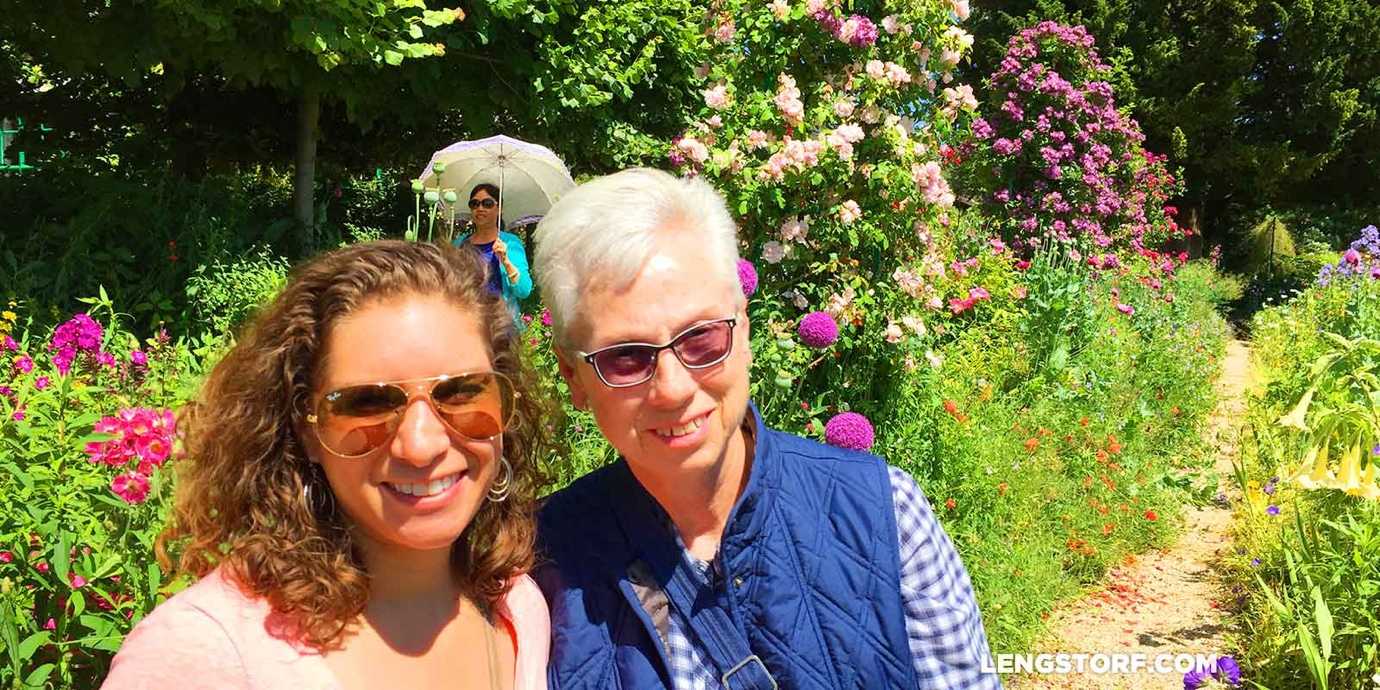
Jil lives for this stuff: tomorrow she’ll be waiting outside a comfortable hotel in the shadow of the Eiffel Tower at 05:30 for a bus tour to Normandie in the morning, back in the late afternoon to haul ass to Musée d’Orsay before closing, off to the Eiffel Tower to see it sparkle at 23:00 on the dot, and in bed right away so she can get up at 04:00 to do it all again the next day.
I get exhausted just reading her itinerary.
But I can see on her face that this — standing on the bridge Claude Monet painted in 1899 — this is a moment for her. Walking through Monet’s house, she could feel Monet in those rooms; she was sharing space with one of her favorite artists.
The meaning — the emotion — that this trip held for her was beyond anything I could ever hope to feel about a house or a garden.
I can’t hold that against her. I can’t hold that against any one of these people here to see something significant from human history.
“This was great, Jil.”
She smiles and thanks me for putting up with the crowds. Then she asks if I want to go to Normandy tomorrow at 05:30. (I don’t.)
But I’ll go to Versailles13 the day after. And then we’ll go to a local bar I like where we’re the only people who don’t speak French. Because I don’t have to choose: I can be a tourist sometimes without ruining my chances at experiencing local hangouts.
So, quick: take my picture in front of this moment. I want all my friends to know I had a like life-changing epiphany in Paris.
That shit gets retweeted like crazy.
Under which I assume used to stand a very charming village.
And just a tad smaller than a football pitch.
Though — let’s be honest — I can only identify maybe a half-dozen flowers without help from Google.
The relationship between septua- and octogenarian human females and botany has a distinctly moth:flame character to it. This was something I had always considered a kind of good-natured stereotype. At least until I entered the garden to find a field of blue and silver hair, about 1.5m tall, swaying slightly in the breeze.
It was actually a baby rail (I think). Which I didn’t know was a type of bird.
Presumably, it was filled with doors, tables, chairs, and a fucking gift shop.
Can we all agree that you just don’t touch strangers? NO TOUCHING!
The castle in the center of Edinburgh, Scotland is a great (?) example of this. All the cannons are covered in high-gloss paint. The dungeons are gift shops now. There’s a concession stand. It feels about as authentic as an Olive Garden.
Except me, of course.
Mostly because we’re ignorant and — despite our best efforts — just clueless about the proper approach to certain situations. Sometimes because we’re painfully, obviously American and bulling through the world’s china shop. And every once in a while because I can just be a dick when I’m hungry.
They do. Every time. Usually before I even open my mouth. Serious question: do I look that American?
Something I hadn’t realized when I first arrived in Paris was the astonishing number of French words and phrases that have been ported directly to English. I knew raison d’être was French; I didn’t know that (just in the As and Bs of the American lexicon) we’d borrowed “aperitif”, “armoire”, “belle”, “boulevard”, “bourgeois”, “bouquet”, and “brunette”.
The grounds at Versailles were incredible, but the palace itself was awful because holy shit the crowds. If there was anything worth seeing there, I couldn’t make it out over the sea of phone screens and miscellaneous objects waved by tour guides to keep their groups from disappearing into the mêlée. 0/10 would not return.
What to do next.
If you’re like me, the idea of traveling permanently while making a living probably seems like a dream — but you don’t think you can pull it off.
I felt that way right up until I actually boarded a flight to leave the United States back in 2014 — and now I can’t believe I didn’t start living this life sooner.
The secret to a life on your terms — work where and when you want, living anywhere in the world — is remote work. And there’s good news: it’s easier than ever before to join the ranks of location-independent workers around the world.
I want to help you. The best remote workers all have a set of non-technical skills, and I’ve put together a free 6-point checklist to help you master them — and ultimately master your time and ability to work anywhere in the world.